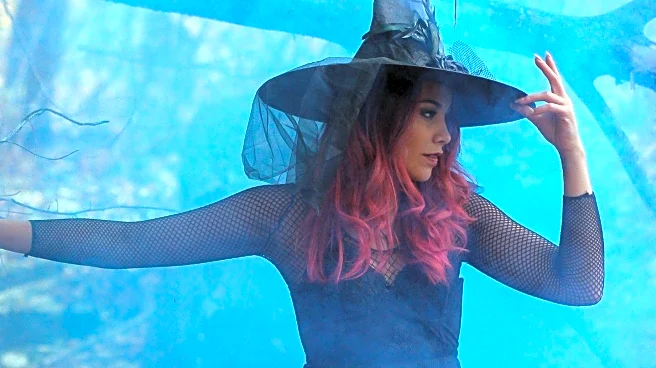What's Happening?
A new research perspective known as trait morbid curiosity has been identified, linking fascination with horror entertainment to psychological traits that handle morbid, threatening, and scary scenarios. The study introduces the Morbid Inquisitiveness Attraction and Religiosity Scale (MIARS), which includes subscales for different attractors such as dark copers, white knucklers, and adrenaline junkies. The research highlights the role of religiosity in horror entertainment, suggesting that it provides a variation of social connection and coping development. The study collected validity and reliability evidence for the MIARS, finding good internal consistency reliability for overall scores but not for subscale scores. The research was conducted online with a small sample size of 97 participants.
Why It's Important?
The study's findings are significant as they offer insights into the psychological traits that drive attraction to horror entertainment and the role of religiosity in this context. Understanding these traits can help in developing strategies to address the psychological needs of individuals who engage with horror media. The research also highlights the importance of considering cultural and social factors in the study of morbid curiosity, as these can influence how individuals perceive and interact with horror entertainment. By exploring the links between morbid curiosity, horror attraction, and religiosity, the study contributes to a broader understanding of human behavior and emotional responses.
What's Next?
Future research may focus on improving the MIARS scale by addressing the limitations identified in the study, such as the lack of reliability and validity evidence for subscale scores. Researchers may also explore the role of other psychological traits in horror attraction and religiosity, providing a more comprehensive understanding of the factors that influence engagement with horror media. Additionally, studies could investigate the impact of cultural and social factors on morbid curiosity and horror attraction, offering insights into how these elements shape individual experiences and perceptions.
Beyond the Headlines
The study's exploration of trait morbid curiosity and its links to horror entertainment and religiosity highlights the complex interplay between psychological traits and cultural factors. It suggests that morbid curiosity may serve as a coping mechanism, allowing individuals to engage with threatening scenarios in a controlled environment. This perspective offers a deeper understanding of how individuals navigate fear and anxiety, providing insights into the potential benefits of horror entertainment as a tool for emotional regulation and social connection.











